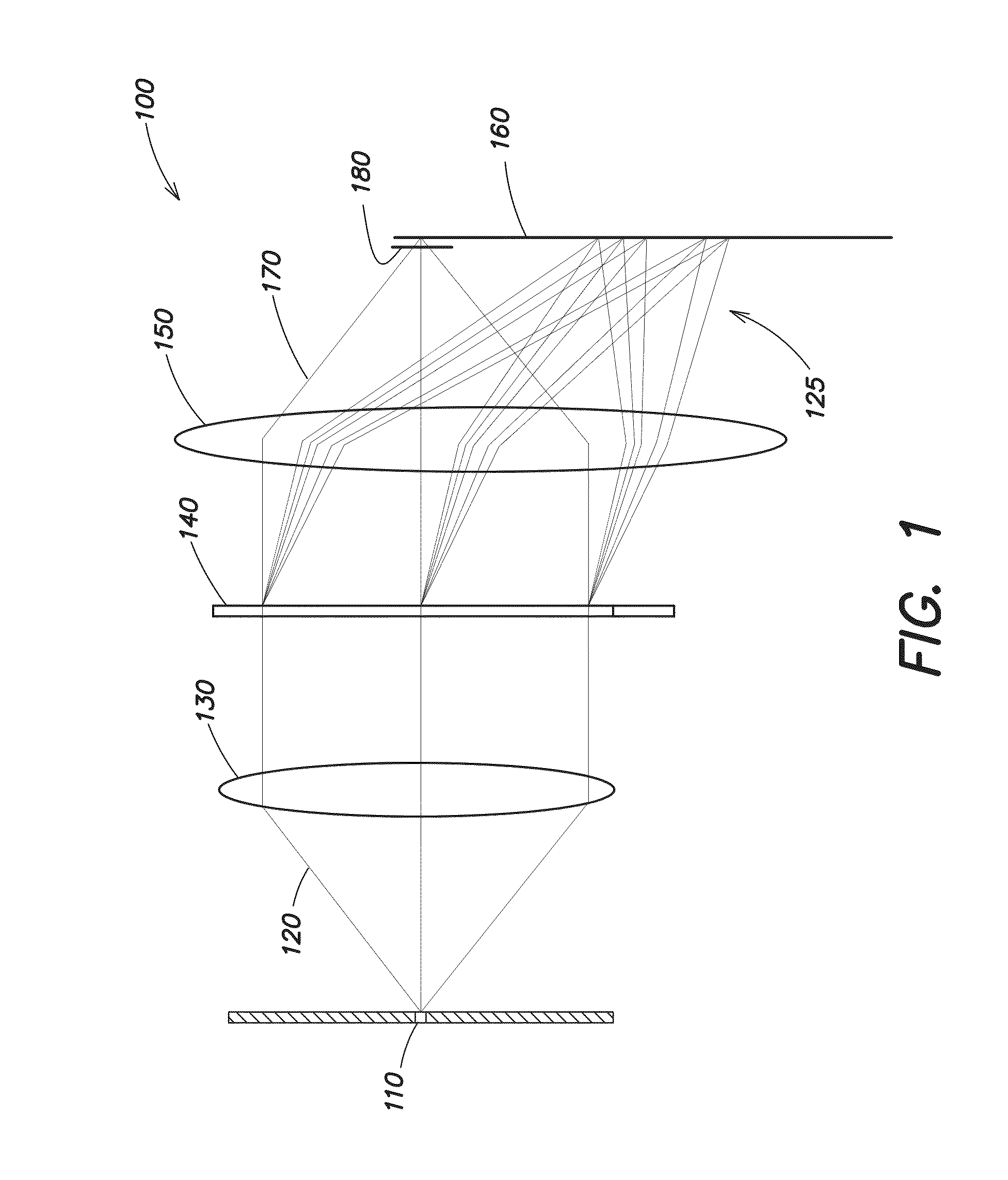Multispectral camera using zero-mode channel
- Summary
- Abstract
- Description
- Claims
- Application Information
AI Technical Summary
Benefits of technology
Problems solved by technology
Method used
Image
Examples
Embodiment Construction
[0015]Aspects and embodiments are directed to a multispectral imaging system that is configured to produce both a conventional three-dimensional multispectral data cube and data related to additional optical properties (such as polarization and translucence, for example) by using the zero-mode channel which is typically ignored in conventional multispectral imagers. As used herein, the term multispectral imager is intended to include both multispectral and multispectral imagers. As discussed in more detail below, according to certain embodiments, a filter is positioned in the optical train of a multispectral imaging system and configured to pass the zero-mode channel to an imaging detector located at the image plane of the system. The filter may have any of numerous configurations, depending, for example, on the optical property to be measured using the zero-mode channel. Using this approach, a multispectral imaging system may be readily configured to provide additional information ...
PUM
 Login to View More
Login to View More Abstract
Description
Claims
Application Information
 Login to View More
Login to View More - R&D
- Intellectual Property
- Life Sciences
- Materials
- Tech Scout
- Unparalleled Data Quality
- Higher Quality Content
- 60% Fewer Hallucinations
Browse by: Latest US Patents, China's latest patents, Technical Efficacy Thesaurus, Application Domain, Technology Topic, Popular Technical Reports.
© 2025 PatSnap. All rights reserved.Legal|Privacy policy|Modern Slavery Act Transparency Statement|Sitemap|About US| Contact US: help@patsnap.com



